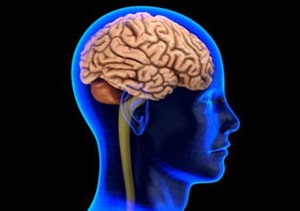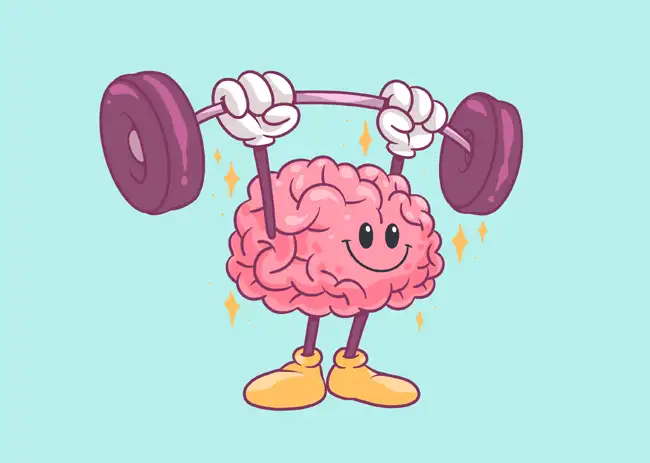Human Brain Practice Reading & Listening
Human Brain Practice Reading & Listening
Human brain
The brain is the most complex organ in the human body. As part of the nervous system, the brain coordinates all of the body’s functions. In adult humans, the brain is a 3-pound gelatinous mass of fat and protein.
Brain regions
It’s comprised of four main regions: the cerebrum, the cerebellum, the brainstem, and the diencephalon, and each one controls specific tasks. The largest section is the cerebrum, and it makes up over 3/4 of the brain’s volume. It consists of neurons, and nerve fibers that transmit information from the neurons, throughout the brain and body.
Cerebrum
The cerebrum controls higher functions such as learning, reasoning, and speech, plus senses like sight and hearing. Under the cerebrum, is the second largest part of the brain: the cerebellum.
Cerebellum
Much like the cerebrum, the cerebellum has nerve cells and nerve fibers. It carries signals to other parts of the brain and the spinal cord. The cerebellum is responsible for coordinating muscle movements, particularly those that help maintain the body’s balance and posture.
Brainstem
The third region, the brainstem, lies in front of the cerebellum and anchors the brain to the spinal cord. The brainstem is a collection of structures that include the pons, a mass of nerve fibers that carry sensory information, the mid-brain, a region of fibers and structures that help control movement, along with auditory and visual processing; and the medulla oblongata, which creates motor and sensory pathways between the mid-brain, the pons, and the spinal cord. Altogether, the parts of brainstem control vital bodily functions, such as cardiac activity, respiration, digestion, and sleep.
Diencephalon
The fourth region is located above the brainstem, and makes up the core of the brain, the diencephalon. About the size of an apricot, the diencephalon is a grouping of several structures: the thalamus which processes and transmits information from all senses except smell, and the hypothalamus and pituitary gland, which work together to produce and regulate neurochemicals. These structures help govern sensations, weight regulation, energy, and instinctual behaviors, such as eating, drinking, and having sex.
The brain’s four main components, the diencephalon, brainstem, cerebellum, and cerebrum, work in sync to ensure bodily functions are fully operational. The brain has even evolved mechanisms to protect itself. One such mechanism is the blood-brain barrier, a semipermeable cellular wall that only allows specific chemicals to enter from the body’s bloodstream into the brain.
Despite this protection, tumors and other complications can lead to life-threatening problems and diseases in the brain, such as dementia. Thankfully, scientists have found ways to improve brain health. Staying physically active, and eating a balanced diet, may preserve cognitive function and even reduce the risk of developing Alzheimer’s, so while the brain only makes up a small percentage of the body, it plays a crucial role in the body’s functions, and overall well-being.




I think brain is very important and we most take care of it.
That’s right. Our brain is king of our bodies, giving orders to our other organs and controlling them directly or indirectly.
—
Feedback
You should know the difference between “most” and “must”.
How can we take care of our brain and keep it sharper as we age through life?
We can take care of our brain by staying physically active, and eating a balanced diet.
That’s right. There are many other ways to increase and optimize the functionality of our brain, and one of them is learning a second or foreign language. So, congratulations, as you are already taking care of it.
The brain is the most complex organ in the human body. As part of the nervous system, the brain coordinates all of the body’s functions. In adult humans, the brain is a 3-pound gelatinous mass of fat and protein. It’s comprised of four main regions: the cerebrum, the cerebellum, the brainstem, and the diencephalon, and each one controls specific tasks. The largest section is the cerebrum, and it makes up over 3/4 of the brain’s volume. It consists of neurons, and nerve fibers that transmit information from the neurons, throughout the brain and body. The cerebrum controls higher functions such as learning, reasoning, and speech, plus senses like sight and hearing. Under the cerebrum, is the second largest part of the brain: the cerebellum. Much like the cerebrum, the cerebellum has nerve cells and nerve fibers. It carries signals to other parts of the brain and the spinal cord. The cerebellum is responsible for coordinating muscle movements, particularly those that help maintain the body’s balance and posture. The third region, the brainstem, lies in front of the cerebellum and anchors the brain to the spinal cord. The brainstem is a collection of structures that include the pons, a mass of nerve fibers that carry sensory information, the midbrain, a region of fibers and structures that help control movement, along with auditory and visual processing; and the medulla oblongata, which creates motor and sensory pathways between the midbrain, the pons, and the spinal cord. Altogether, the parts of brainstem control vital bodily functions, such as cardiac activity, respiration, digestion, and sleep. The fourth region is located above the brainstem, and makes up the core of the brain, the diencephalon. About the size of an apricot, the diencephalon is a grouping of several structures: the thalamus which processes and transmits information from all senses except smell, and the hypothalamus and pituitary gland, which work together to produce and regulate neurochemicals. These structures help govern sensations, weight regulation, energy, and instinctual behaviors, such as eating, drinking, and having sex. The brain’s four main components, the diencephalon, brainstem, cerebellum, and cerebrum, work in sync to ensure bodily functions are fully operational. The brain has even evolved mechanisms to protect itself. One such mechanism is the blood-brain barrier, a semipermeable cellular wall that only allows specific chemicals to enter from the body’s bloodstream into the brain. Despite this protection, tumors and other complications can lead to life-threatening problems and diseases in the brain, such as dementia. Thankfully, scientists have found ways to improve brain health. Staying physically active, and eating a balanced diet, may preserve cognitive function and even reduce the risk of developing Alzheimer’s, so while the brain only makes up a small percentage of the body, it plays a crucial role in the body’s functions, and overall well-being.
Thank you so much for your perfect transcription.